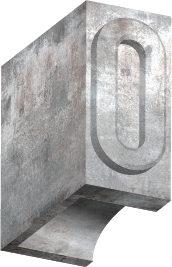
ur class will be fully in person this semester, meaning you will have ready access to the Mac computers installed in our classroom. For a skills course like this one, you will need to do substantial work outside of class time, most likely on your own computer, and you are free to use your own machine during our sessions if you prefer. There are several pieces that will be vital to your completing our projects and exercises. The good news is that all the software listed below is free to you, either as a regular person or as an IU student.

The basics
A computer: That you will need a working computer probably goes without saying if you are taking a class like this, but you can simply use the machines on campus if necessary — in our classroom (if it’s empty) or in the Multimedia Lab of Franklin (it has now moved to room 005). If you do plan to work from home, you will need to have a machine (Mac or PC) that is robust enough to run Adobe software; a Chromebook or tablet would not be sufficient.
For more on system requirements for Adobe software, go to helpx.adobe.com/creative-cloud/system-requirements.html.
Duo: Two-Step Login (Duo) is required for all students. Be sure to have your primary device at hand for each class so you can log in to secure IU systems. You will also need to authenticate to use Adobe Creative Cloud applications. I strongly recommend that you download the Duo Mobile app rather than just having the authentication “call” you. This will allow you to easily publish your final project via Pages, and will also allow you to better navigate the various authentication processes you will need encounter in this course.
If you still need to set up Duo, get started at: twostep.iu.edu.
Learn more about recommended devices at: kb.iu.edu/d/anfl.
For help resources, see: kb.iu.edu/d/aluu.
And for any questions on the Duo Mobile app, see uits.iu.edu/duoapp.
Software
Creative Cloud: As an IU student, you have access to Adobe Creative Cloud and the latest versions of the Adobe software. We will use these programs extensively during class sessions, and you can use the software for free on your own computer. There are more than a dozen software packages available through CC, and you can install as many or as few as you would like. For access to Creative Cloud, go to uits.iu.edu/adobe.
For more on using Creative Cloud as an IU student, go to kb.iu.edu/d/bdfy.
Adobe’s “Big Three”: With your Creative Cloud subscription, you have access to more than 20 Adobe applications. I encourage you to explore the creative possibilities of all of them, but for our class, it is essential that you download and install the following:
- InDesign: For layouts
- Photoshop: For imaging and illustration
- Illustrator: For illustration and charting
I generally consider it good practice to keep your own apps updated, as Adobe regularly makes enhancements and fixes. But this could mean the version of the software we use in Franklin Hall may not match your version. It’s helpful to “save backward” if this is the case — it likely would only affect InDesign in our class.
Microsoft Office 365: You likely will have installed Microsoft Office on your own computer; Office gives you access to the latest versions of Office’s desktop and mobile apps, including Word, Excel and PowerPoint, amog others.
For our class, you will find it useful to have Word available, as it is useful in all your classes to some degree, but Word is not required. Excel, on the other hand, is, as we will need to use it make calculations and refine data for our Information Graphics unit.
For more information on Office Tools and the various apps you can add to your computer, go to iuware.iu.edu.
For specifics on how to use Office 365 at IU, go to kb.iu.edu/d/bexq.
Apps for web design: For our final unit in J365 – Web Design — you will need three additional applications: one to write and edit code, and two to enable you to publish your J365 website. All of them are free (though Cyberduck will ask you for a donation, and Sublime will occasionally offer you an option to purchase it). No need to do this on Day One … we are scheduled to start the Web Unit in Week 13. Here is the software that you will need by then:
- Sublime Text: This app will allow you to write HTML and CSS code. You can download it from sublimetext.com. If you prefer a different code editor, feel free to use it instead.
- Ivanti Secure: Formerly Pulse Secure, this VPN client will allow you to access the Pages server, where you will upload your website as our final project. If you had previously downloaded and installed Pulse Secure, that app will continue to work as it did despite its rebranding. You can read about how to configure Ivanti and download it from kb.iu.edu/d/aygt.
- Cyberduck: This FTP app will allow you to transfer your files from your computer to the Pages server. You can download it from cyberduck.io/download/.
Publishing your website is as easy as transferring files, but you will need to authenticate (via Duo) three times each time you upload files to the server ... so make sure you have the Duo Mobile app installed by the time we get to web design!
Sharing files
With two team projects, you will want to share files and resources with your teammates, so I recommend you set up a folder early in the semester in either Microsoft One Drive or Google Drive. With the former, you can actively work within the Drive, and there is no significant limit to the amount of files (actually the amount of bytes) you can have there. As you work on the team projects, you can create folders and invite collaborators.
Learning resources
There are a vast number of graphic design books available, and many of them are excellent resources. My belief is that this class will benefit from not tying itself to a single book, so to that end I do not require you to buy a textbook. I do recommend, however, that you seek out readings that will help develop your knowledge and skills, and I can suggest resources. I will be assigning a series of short readings from a variety of sources that will help you understand some of the basic concepts of this course. Don’t worry — all are brief and pretty visual. They will be available, in PDF form, from the Files section of Canvas, and will cover such general topics as typography, color use and effective web design. I will also be happy to recommend books or online resources for specific design inspiration, should you desire it.

As for learning computer skills, please take full advantage of LinkedIn Learning (formerly Lynda.com), which has thousands of online tutorials that will help you learn to do just about anything with just about any commercially available software on the planet. As an IU student, you can access these turoial videos for free through one.iu.
Adobe maintains a good number of online tutorials through its website. You can look for specific topics or watch a series of videos to get familiar with the software. Browse through the tutorials here: helpx.adobe.com/creative-cloud/view-all-tutorials.html.
You can also visit the “learn and support” areas for each of the “Big Three” at the links below, which include in-depth User Guides:
- InDesign: helpx.adobe.com/support/
indesign - Photoshop: helpx.adobe.com/support/
photoshop - Illustrator: helpx.adobe.com/support/
illustrator
Later in the semester, when we are learning HTML and CSS, I will provide some basic handouts, but I would recommend that you bookmark this site: www.w3schools.com. It includes easy-to-find step-by-step reference to help teach you HTML, CSS and virtually any programming language you would like to learn.
Other necessities
You won’t need to buy anything to participate and succeed in J365, but I would recommend that you check your available storage space on your computer, as you will be generating a good number of files for J365, and to consider an external drive to archive any material you may need to move off.
As this is a creative class, I would further recommend you have at hand paper and quality pencils to sketch through your ideas for our projects; you will find this a valuable step in any creative process.

